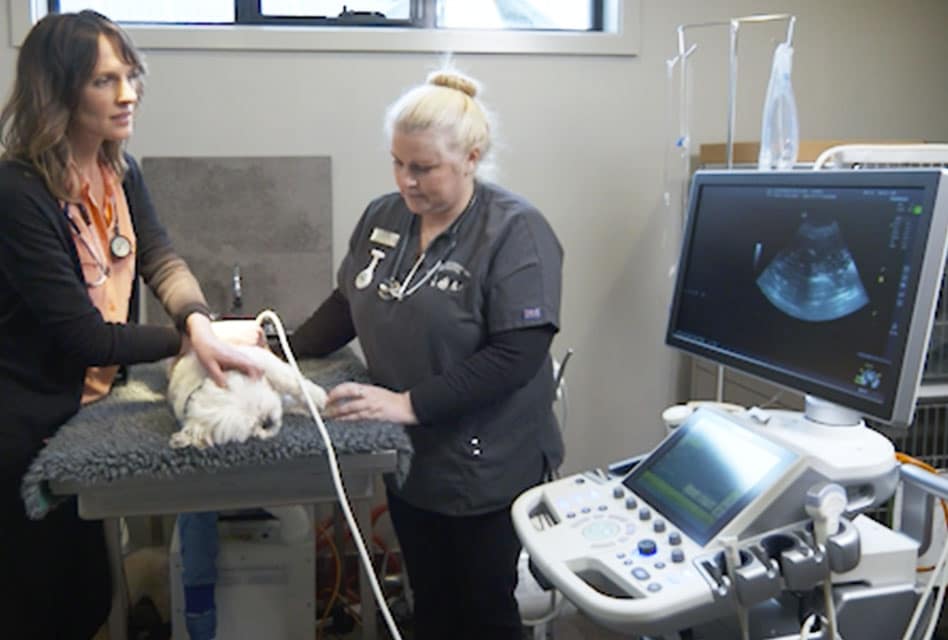

As with humans, the rates of cancer in dogs and cats is on the rise.
Around one in four dogs will develop cancer during their lifetime — and for dogs over ten, that risk jumps to one in two. In cats, cancer is a little less common, but it can often be more aggressive.
According to the Pet Health Monitor 2024, the most common cancer in dogs is a Mast Cell Tumour, followed by Lymphoma, while in cats, it’s Lymphoma and then Squamous Cell Carcinoma.
About half of all canine cancers can be detected through a simple physical examination. That’s why it’s so important to see your vet at the first sign of any physical or behavioural change — and to keep up with their annual vet check-ups. It’s often during these visits that we pick up early signs of serious disease in dogs that otherwise appear healthy.
Just like in people, cancer in pets can be caused by many factors — chronic inflammation, genetics, diet, lifestyle, and exposure to environmental toxins all play a role.
Common symptoms that may indicate cancer in dogs include rapid weight loss, reduction in appetite, unwillingness to exercise, visible lumps or growths on the skin, difficulty swallowing, breathing or going to the toilet. coughing, vomiting or lameness.
These symptoms are however common to a large number of illnesses, so a thorough workup from your vet will be required to determine the cause, with cancer sometimes being the remaining diagnosis when all other possible causes have been ruled out.
A physical examination is the first step and may be followed by a blood test, X-rays, ultrasound or advanced imaging such as CT scans and MRI.
Just as with human medicine, veterinary oncology has advanced tremendously in recent times and many cancers in dogs can be successfully placed into remission to prolong quality of life or even cured completely.
Depending on the type of cancer in dogs and cats, treatment can involve a combination of surgery and chemotherapy or radiotherapy or just one treatment type on it’s own.
The main thing to remember when it comes to treating cancer in dogs and cats, is that our pets tend to have far fewer side effects from chemotherapy than us humans. Pets have shorter lifespans than us so specialist veterinary oncologists are treating with the aim of achieving remission rather than a cure. Doses of medications can therefore be lower and surgery less invasive or drastic.
The treatment for cancer in dogs and cats doesn’t just attack the cancer cells. It can also damage healthy cells, particularly in the gut, leading to side effects like nausea, vomiting, diarrhoea, and loss of appetite.
That’s why maintaining gut health during treatment is so important. The gut microbiome — the community of bacteria living in the digestive tract — plays a vital role not just in digestion, but in immune function and overall wellbeing.
When chemotherapy disrupts this balance, supplements like a postbiotic such as EAC Inside Out Vet can help. It works to reduce gut inflammation, improve digestion and nutrient absorption, and support a healthy immune system.
Every pet is different of course, so always consult your veterinarian before starting any new supplements to ensure they’re right for your pet’s needs and treatment plan.
Treatment for cancer in dogs can be costly, but the benefits are undoubtedly worth it if it means that your dog can have extended quality of life.
Having pet insurance cover should you decide to go ahead with a treatment plan is also useful.
About the Author: Dr Melissa Meehan BVSc (Hons), MANZCVS (Int Med)
Dr Melissa Meehan is a highly experienced and respected veterinary surgeon with over 16 years experience. Dr Melissa obtained her Members in Small Animal Medicine through examination in 2008 and now runs her own veterinary ophthalmology service www.vetophthalmology.com.au

How to keep your dog safe during fireworks



Can I use Antihistamines for dog allergies?

What to feed a dog at each life stage


Get your paws on Lara Shannon’s best selling books ‘Eat, Play, Love (your dog) and World of Dogs.
Available in Australia, USA, UK and Canada.